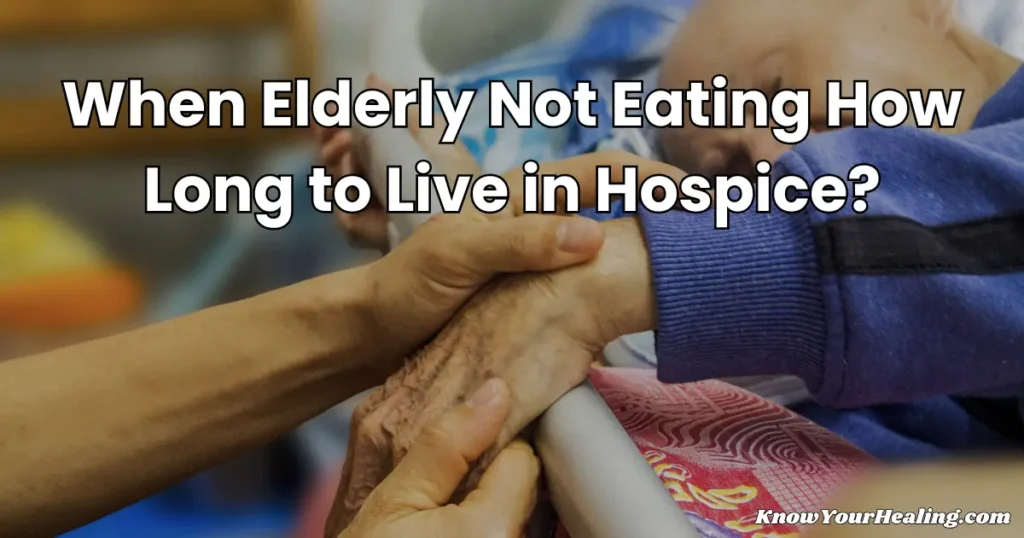When older adults start losing weight, eating less, and struggling with daily activities, they might be facing failure to thrive.
This syndrome, which can lead to death if ignored, involves more than just not eating—it’s a steep, multifaceted decline in health and function.
Failure to thrive in elderly patients refers to a loss of more than 5 percent of body weight, a decline in appetite, poor nutrition, and inactivity. It can affect up to 35 percent of community-dwelling older adults and comes with a high risk of death.
This guide explores the causes, how doctors diagnose it, and what families and healthcare teams can do to identify failure to thrive early.
We’ll look at ways to improve outcomes and quality of life for older adults struggling with this tough syndrome.
Understanding Failure to Thrive in Elderly Patients and Underlying Causes

Failure to thrive in elderly people isn’t just one problem—it’s a tangled web of physical, mental, and social issues that can spiral into a dangerous decline. Each of these factors feeds into the next, making it hard to break the cycle.
What is failure to thrive in older adults, and its multifactorial nature?
Failure to thrive is a multifactorial syndrome in older adults. The Institute of Medicine defines it by weight loss of 5 percent or more, decreased appetite, poor nutrition, and inactivity.
Key characteristics include:
- Weight loss exceeding 5% of body weight
- Decreased food intake and appetite
- Physical inactivity and weakness
- Dehydration and nutritional deficiencies
No single disease causes failure to thrive. Instead, chronic illnesses, medication side effects, and challenging social situations combine to start a downward spiral.
Rates vary—about 5 to 35 percent of older adults living at home, and 25 to 40 percent of nursing home residents deal with this. Hospital mortality for these patients can hit 16 percent.
Key risk factors: poor nutrition, chronic diseases, cognitive decline
Poor nutrition both causes and results from failure to thrive. Malnutrition stands out as a strong predictor of death, with low cholesterol and albumin levels showing the most serious decline.
Chronic diseases like heart disease and diabetes slowly chip away at strength and independence. Medications for these illnesses often bring side effects that sap appetite and cloud thinking.
Cognitive decline, including early dementia, makes it hard for older adults to manage meals, medications, and safety. Alzheimer’s disease, in particular, speeds up the path toward failure to thrive.
Primary risk factors include:
- Chronic health conditions need several medications
- Cognitive problems affecting daily decisions
- Nutritional gaps from not eating enough
- Drug side effects that kill appetite
Functional impairments, weight loss, and diminished activities of daily living
When older adults lose strength or coordination, basic daily tasks such as bathing or eating can become exhausting. These functional losses trigger a chain reaction, accelerating the decline.
Unintentional weight loss—more than 5 percent in six months—often signals things are getting serious. Muscle wasting and low protein stores frequently occur together.
Staying inactive makes things worse. Less movement means weaker muscles and a lower mood, and thinking skills can slip, too.
Functional assessment tools measure:
- Katz ADL scale for basic self-care
- Lawton IADL scale for complex daily tasks
- “Up & Go” test for mobility and fall risk
- Physical exam findings like muscle wasting
Social isolation hits hard. When older adults lose connections, their motivation for self-care and healthy eating often fades. Sometimes, family members are the first to notice changes—perhaps Mom stops attending church, or Dad leaves meals unfinished.
Depression frequently shows up alongside failure to thrive, making things worse by draining energy and appetite. It’s not always easy to tell depression from normal grief, but both deserve attention.
Family members play a crucial role in noticing subtle shifts—such as a decline in interest in hobbies, poor grooming, or unusual eating habits—often before doctors catch on.
Psychosocial assessment includes:
- Social support and living situation
- Major life changes or recent losses
- Possible depression or anxiety
- Money and access to care
How adult failure to thrive reveals itself in the elderly population with chronic conditions
Failure to thrive doesn’t look the same for everyone. In older adults with chronic illnesses, it usually shows up as a slow, vague decline—not one clear disease but a mix of problems piling up.
Doctors often see a combination of poor physical function, malnutrition, depression, and cognitive trouble. These issues overlap, exacerbating each other.
To diagnose, doctors use blood tests, check thyroid function, and review medications for harmful interactions. A thorough assessment is key.
Clinical presentation typically involves:
- Symptoms that build up over weeks or months
- Multiple body systems are acting up
- Struggles with daily routines
- Higher risk for infections and injuries
Diagnosis, Evaluation, and Medical Context

When doctors suspect failure to thrive as a cause of death in the elderly, they run a series of tests and assessments. They review lab results, assess physical abilities, examine medications, and evaluate mental status to piece together the complete picture.
Comprehensive assessment: complete blood count, chemistry panel, thyroid-stimulating hormone level
A complete blood count (CBC) helps doctors identify anemia, infections, or blood disorders that may be contributing to a patient’s decline—the chemistry panel checks for metabolic problems and low albumin, which can indicate malnutrition. Poor kidney or liver function can also show up here.
Key Laboratory Tests:
- Complete blood count (CBC)
- Basic metabolic panel
- Liver function tests
- Albumin and protein levels
Doctors also test thyroid-stimulating hormone to catch an overactive or underactive thyroid. Both can cause big swings in weight and energy.
Sometimes, they’ll order a chest x-ray or check vitamin B12 and folate levels, especially if nutritional deficiencies seem likely. It’s not always obvious what’s going on until all the results come in.
Identifying functional decline: physical activity, physical examination, functional status
During a physical exam, doctors look for signs of muscle loss, malnutrition, and dehydration. They check weight, skin, and other basic aspects to gauge overall health.
Functional assessment tools help measure an individual’s ability to manage daily life effectively. The Timed Up and test, for example, times how long it takes to stand up, walk a few meters, and sit again—simple, but revealing.
Functional Assessment Areas:
- Basic ADLs: Bathing, dressing, eating, toileting
- Instrumental ADLs: Cooking, shopping, managing medications
- Mobility: Walking, balance, fall risk
- Physical activity: Exercise tolerance, endurance
Physical therapists often help assess strength and movement. When the function declines, both the quality of life and survival are affected.
Medication review to assess side effects and drug interactions
Doctors review every medication an older adult takes, looking for ones that might sap appetite, cause nausea, or muddle thinking. Polypharmacy—taking lots of meds—raises the risk of harmful interactions.
Some drug combinations reduce appetite or dangerously lower blood pressure. These side effects can occur unexpectedly, especially when multiple doctors prescribe medications.
Healthcare teams check for:
- Drugs that kill appetite
- Stomach-related side effects
- Risks for confusion or memory problems
- Dangerous drug-drug interactions
Sometimes, social workers step in to help families manage complex medication routines, especially when memory issues are in play.
When hospice care or palliative care becomes part of the plan
Hospice care makes sense when failure to thrive signals the end of life. At that point, the focus shifts from curing to comfort.
Palliative care tackles pain and emotional needs, sometimes alongside ongoing treatments. Teams can include doctors, social workers, and spiritual counselors.
Hospice Criteria Considerations:
- Life expectancy under six months
- Function keeps dropping despite treatment
- Frequent ER visits
- Noticeable weight loss and weakness
Families receive help with home care and planning for the future. Early palliative care can make a big difference for everyone involved.
The influence of cognitive impairment and Alzheimer’s disease on diagnosis
Cognitive problems make diagnosing failure to thrive tricky. Patients may not remember symptoms or report them accurately, so doctors often rely on family and caregivers for a more complete picture.
Alzheimer’s disease speeds up decline and often messes with eating habits. Patients may forget to eat, have trouble swallowing, or lose interest in food—leading to unintended weight loss.
Cognitive Assessment Tools:
- Mini-Mental State Examination
- Mini-Cog Test
- General Practitioner Assessment of Cognition
Depression often tags along with cognitive decline, making nutrition and socializing even harder. Mental health needs its plan, but it’s all connected.
Dementia care often requires creative solutions for nutrition and combating isolation. It’s rarely straightforward.
Managing Failure to Thrive to Improve Quality of Life and Outcomes

Managing failure to thrive takes a team approach. Addressing nutrition, physical decline, and psychosocial factors together can help older adults stay functional longer and lower the risk of death.
Elderly patients with failure to thrive need a team approach. Healthcare professionals—doctors, nurses, physical therapists, social workers, and nutritionists—must work together.
Primary care doctors usually start by figuring out what’s going on. They order blood work, such as complete blood counts, chemistry panels, and thyroid tests, to check for hidden medical issues.
Social workers step in to look at home life and connect families to community resources. They also address social isolation and assist with arranging rides to appointments.
Physical therapists design exercise programs to help people stay active and safe. They focus on daily living skills, enabling patients to maintain their independence for longer.
Team meetings allow everyone to share their insights and refine the plan as needed. This way, nothing slips through the cracks while caring for these patients.
Nutritional assessment and dietary supplements to boost body weight and food intake
Poor nutrition often drives failure to thrive in older adults. Providers need to look closely at eating habits, food likes and dislikes, and what makes it hard to eat well.
Registered dietitians dig into recent weight changes, appetite, and daily food intake. Blood tests can indicate if someone’s deficient in vitamins or protein.
Supplements, such as protein powders, multivitamins, or meal replacements, can help when regular meals fall short. Sometimes, it’s the only way to hit calorie and nutrient goals.
Fixing problems like dental pain, side effects from meds, or trouble swallowing can make a huge difference. Eating alone or not having enough food at home also needs attention.
Families often need a crash course in senior nutrition. They learn to spot unintentional weight loss and whip up meals that pack a nutritional punch.
Supporting physical function through physical therapy and early intervention
Physical decline accelerates rapidly when older adults stop moving. Physical therapy focuses on maintaining strength, balance, and mobility to prevent people from losing their independence.
Therapists use tests to check walking, balance, and daily skills. They want to know what patients can do right now—then build from there.
Exercise plans target weak muscle groups and keep the heart healthy. Resistance training helps hold onto muscle, while cardio keeps the body running smoothly.
Balancing work cuts reduces risk. A bad fall can land someone in the ER and push them further into decline.
Starting therapy early matters. Waiting until someone’s bedbound makes recovery much more challenging.
Loneliness and depression often fuel failure to thrive. Mental health care targets memory loss, sadness, and anxiety in older adults.
Social connection significantly enhances the quality of life. Community programs, family visits, and group activities help combat the loneliness that exacerbates the situation.
Counseling helps patients handle loss, whether it’s a friend, independence, or health. Grief and sadness need real support—not just a sympathetic ear.
Screening for memory problems, such as Alzheimer’s, helps families plan care early. A precise diagnosis sets the stage for better support.
Families sometimes need a little guidance, too. They pick up new ways to communicate and learn when it’s time to call in mental health professionals.
Prognosis, life expectancy, and reducing higher mortality rates
Spotting failure to thrive early and treating it can change the outcome. Patients who receive a comprehensive range of interventions often experience significant improvements in function and survival.
Prognosis depends on the root causes and how patients respond. If the problem is something reversible—like medication side effects or depression—people can bounce back with the right care.
Those with several ongoing illnesses might need palliative or hospice care when medicine can’t turn things around, planning for the end of life matters.
Doctors monitor weight, function, and quality of life. Adjusting the care plan as things change helps everyone stay on track.
Final Thoughts
Failure to thrive in the elderly is a serious medical issue that touches millions of older adults worldwide. This complex syndrome, marked by weight loss and decline, needs quick action from doctors and families alike.
Spotting it early can genuinely save lives. Teams should look for red flags, such as sudden weight loss, decreased appetite, or withdrawal from social life.
Treatment options are out there and can turn things around if you catch it soon enough. Getting to the root causes often leads to good results.
Key interventions include:
- Nutritional support and dietary counseling
- Depression screening and mental health treatment
- Physical therapy and strength training
- Medical evaluation for underlying conditions
Family involvement changes the game. Loved ones are often the first to notice changes and can encourage treatment adherence.
The numbers tell the story:
- 5-35% of community-dwelling older adults
- 25-40% of nursing home residents
- 50-60% of hospitalized veterans
Providers shouldn’t chalk this up to normal aging. This syndrome needs a thorough workup and a focused treatment plan.
Failure to thrive in the elderly is a cause of death that needs urgent medical attention, but with the proper support, many people can regain strength and independence.
Frequently Asked Questions
Many caregivers and families wonder about failure to thrive in older adults—what causes it, what to look out for, and what the future might hold. Knowing the risks, treatment options, and prognosis helps families make informed decisions.
What causes failure to thrive in older adults?
Failure to thrive in elderly patients results from multiple causes acting in concert. Chronic illnesses like heart failure, diabetes, and kidney disease often play a big part.
Depression can both cause and result from failure to thrive. Side effects from multiple meds don’t help, either.
Being alone, money troubles, and a weak support system all raise the risk. Dental issues or trouble swallowing make eating tough.
Does failure to thrive mean death?
Failure to thrive doesn’t mean death is imminent. Still, the condition raises mortality risk in older adults.
The outcome depends on the underlying causes and the speed of treatment initiation. Some people recover well with reasonable care and support.
Early action usually brings better results. Without it, things tend to get worse.
What is the life expectancy of failure-to-thrive patients?
Life expectancy varies significantly depending on overall health and other medical factors. Hospital mortality rates can hit 15.9 percent for these patients.
Multiple chronic illnesses usually shorten lifespan. But if someone responds well to treatment, they could live months or even years.
Age and what someone can do at the time of diagnosis also matter. Younger, healthier patients tend to do better.
How to reverse failure to thrive in adults?
Treatment targets what can be fixed. Nutritional supplements are key for many patients.
Antidepressants sometimes help a lot. Physical therapy and strength training help prevent muscle wasting.
Social support and environmental changes may be necessary. Doctors check in regularly to see if the plan is working.
Is failure to thrive a symptom of dementia?
Failure to thrive isn’t always a sign of dementia, but it can occur together. Cognitive problems are one of four main syndromes that predict worse outcomes.
Dementia can lead to trouble eating or remembering to take meds. That can increase the likelihood of failure to thrive.
However, many patients with failure to thrive have normal cognitive skills. Each problem needs its own evaluation and plan.
What is the most common cause of failure to thrive?
Not eating enough calories is usually the biggest culprit in older adults. Poor nutrition can lead directly to weight loss and weakness.
Many factors can reduce food intake, including loss of appetite, chewing difficulties, or eating alone. Medical issues that mess with digestion or absorption don’t help either. Depression often kills interest in food and cooking.
Is failure to thrive a hospice diagnosis?
Failure to thrive can make someone eligible for hospice if it’s severe and keeps getting worse. Doctors should talk about end-of-life options instead of pushing unnecessary treatments.
Hospice care depends on the patient’s overall physical and mental state. Usually, the doctor estimates that the patient has six months or less to live.
Some people do better with palliative care instead. That means comfort comes first, but some treatments for illness continue.
What are four symptoms of failure to thrive?
The big four are loss of physical function, poor nutrition, depression, and thinking problems. These often appear together and worsen over time.
Losing more than 5% of baseline weight is a big red flag. Appetite drops and poor nutrition usually follow.
People stop moving and pull away from others. Dehydration and fatigue can also creep in.
What is the most common age for failure to thrive?
Failure to thrive becomes more apparent as people age, especially after the age of 75. Approximately 5 to 35 percent of older adults living at home experience it.
Nursing home rates jump to 25–40 percent. Hospitalized seniors see even higher numbers.
Risk increases each decade as health issues accumulate. Folks over 85 face the highest odds.
What is the wasting syndrome in the elderly?
Wasting syndrome in elderly adults refers to noticeable weight loss and muscle breakdown that often occurs as people age or face illness. Doctors usually see this overlap with what they call failure to thrive.
The syndrome strips away both muscle and fat tissue. As a result, people feel weak and tired—sometimes it’s hard to even get out of bed.
Chronic inflammation and shifting hormone levels drive much of this process. Additionally, many older adults experience a loss of appetite or inadequate protein intake, which further exacerbates the issue.




